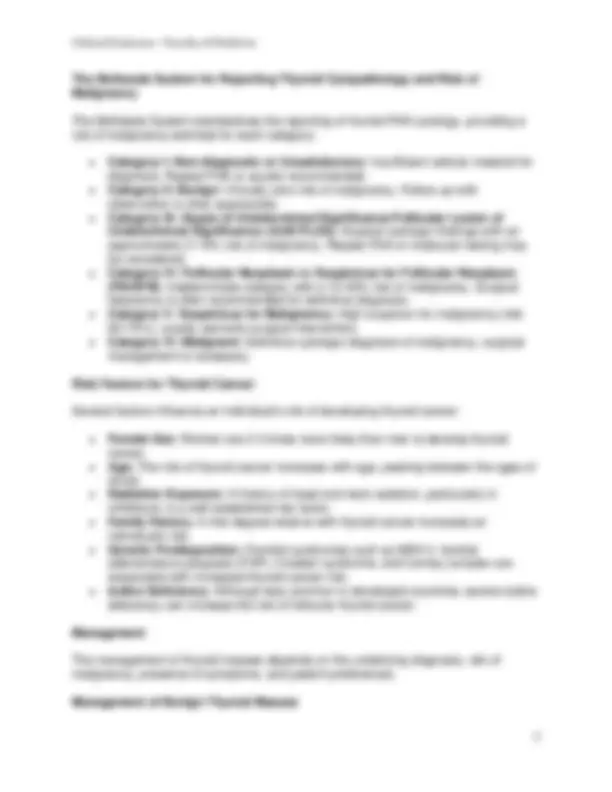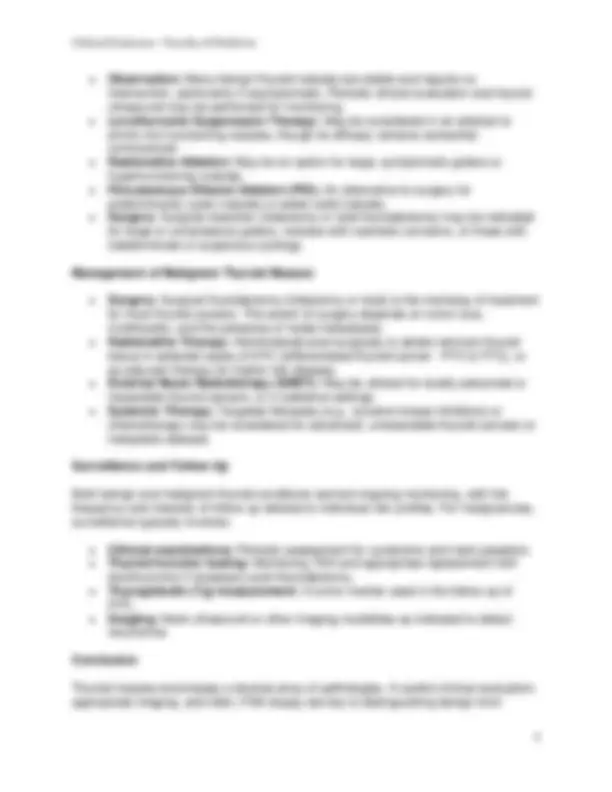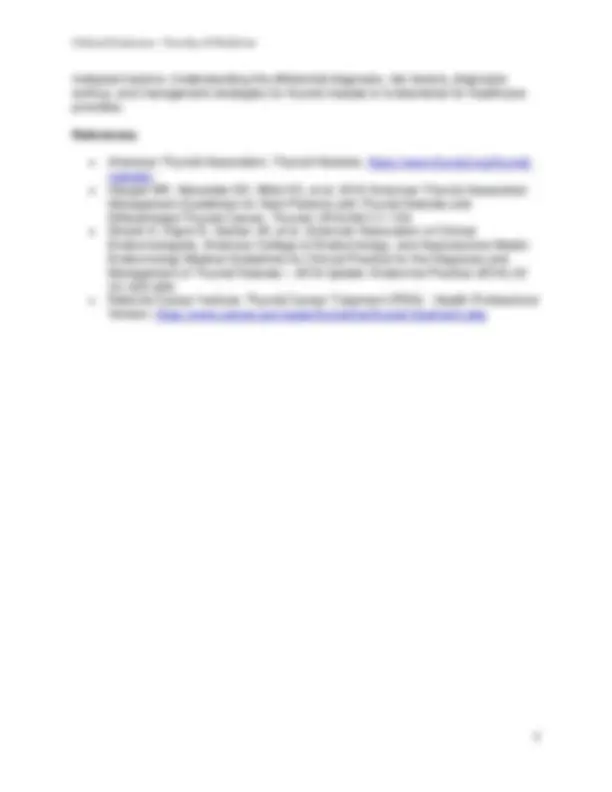





Study with the several resources on Docsity

Earn points by helping other students or get them with a premium plan


Prepare for your exams
Study with the several resources on Docsity

Earn points to download
Earn points by helping other students or get them with a premium plan
Community
Ask the community for help and clear up your study doubts
Discover the best universities in your country according to Docsity users
Free resources
Download our free guides on studying techniques, anxiety management strategies, and thesis advice from Docsity tutors
An in-depth analysis of thyroid masses, discussing both benign and malignant conditions. It covers the differential diagnosis, clinical presentation, and management strategies for various thyroid masses, including multinodular goiter, solitary thyroid nodule, thyroid cysts, thyroiditis, papillary thyroid carcinoma, follicular thyroid carcinoma, medullary thyroid carcinoma, anaplastic thyroid carcinoma, and thyroid lymphoma. The document also discusses risk factors, diagnostic evaluation, and the bethesda system for reporting thyroid cytopathology.
Typology: Study notes
1 / 5

This page cannot be seen from the preview
Don't miss anything!




Introduction The thyroid gland, a butterfly-shaped endocrine organ located in the anterior neck, plays a critical role in metabolism, growth, and development through the production of thyroid hormones. Thyroid masses, or nodules, are common clinical findings, with a prevalence exceeding 50% in the general population. Fortunately, the vast majority are benign. However, a systematic approach to evaluating thyroid masses is essential to rule out malignancy, estimate the risk of complications, and determine appropriate management. Differential Diagnosis The differential diagnosis of thyroid masses is broad and encompasses both benign and malignant conditions: Benign Thyroid Masses:
malignant lesions. Understanding the differential diagnosis, risk factors, diagnostic workup, and management strategies for thyroid masses is fundamental for healthcare providers. References